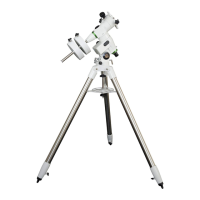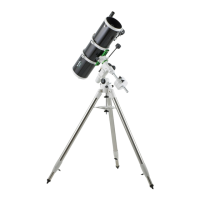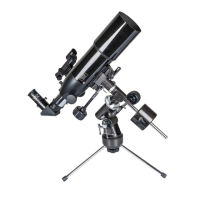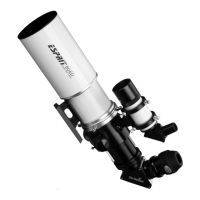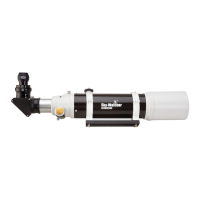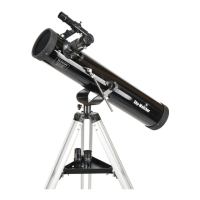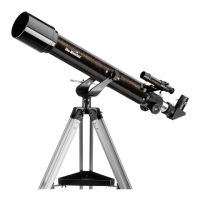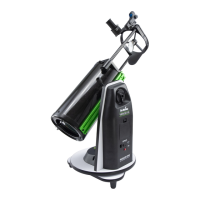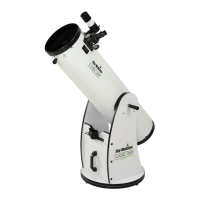17
A German Equatorial mount has an adjustment, sometimes called a wedge, which tilts the mount's polar axis so
that it points at the appropriate Celestial Pole (NCP or SCP). Once the mount has been polar aligned, it needs to
be rotated around only the polar axis to keep an object centred. Do not reposition the mount base or change the
latitude setting. The mount has already been correctly aligned for your geographical location (i.e. Latitude), and all
remaining telescope pointing is done by rotating the optical tube around the polar (R.A.) and declination axes.
A problem for many beginners is recognizing that a polar-aligned, equatorial mount acts like an alt-azimuth mount
which has been aligned to a celestial pole. The wedge tilts the mount to an angle equal to the observer's Latitude,
and therefore it swivels around a plane which parallels the celestial (and Earth's) equator (Fig.m). This is now its
"horizon"; but remember that part of the new horizon is usually blocked by the Earth. This new "azimuth" motion is
called Right Ascension (R.A). In addition, the mount swivels North(+) and South(-) from the Celestial Equator
towards the celestial poles. This plus or minus "altitude" from the celestial equator is called Declination (Dec).
Fig.m
Plane of local horizon
Nadir
Equatorial Mount
(Northern Hemisphere)
Mount aligned on
North Celestial Pole
Zenith
Right
Ascension
Apparent
movement
of stars
Plane of Celestial
Equator
Meridian
Line
Declination
Object you
are viewing
Polaris
Latitude
W
S
E
N
Pointing
Y
our Te
lescope

